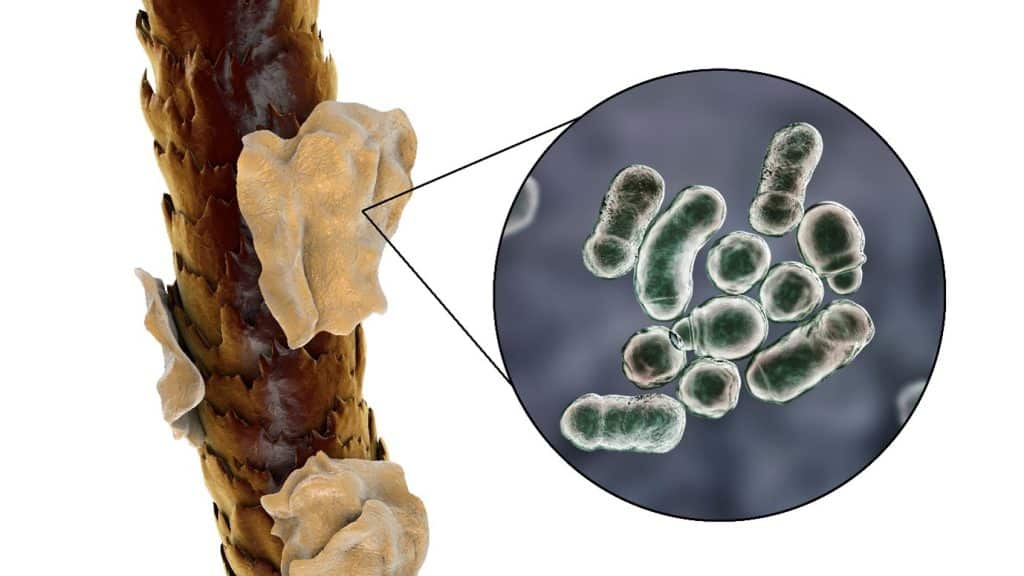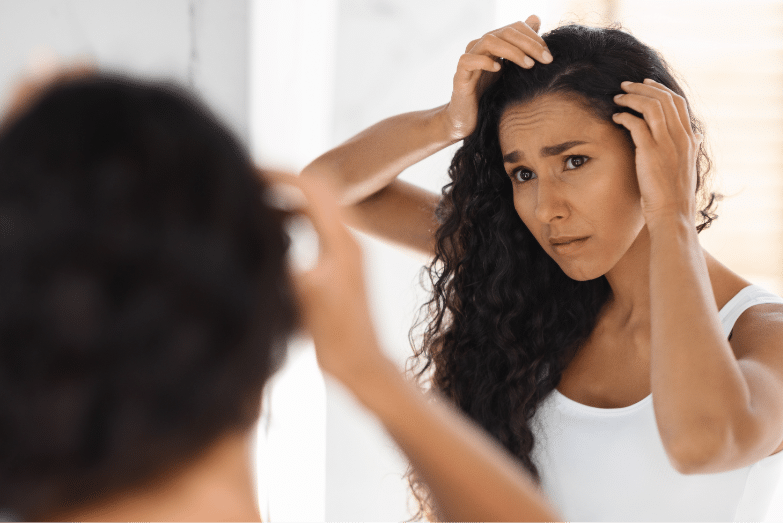Nourish Your Scalp’s Health with Mānuka Oil
Background
Dandruff is a skin condition that affects up to 50% of all people of all ages, and is characterised by an itchy and flaky scalp. It can be a source of
embarrassment and discomfort to sufferers. Dandruff is a chronic form of eczema of the scalp and is also called seborrheic dermatitis, seborrheic
eczema and seborrheic psoriasis (Mayo Clinic, 2022). When it occurs in infants, it is called cradle cap. Cradle cap typically develops within the first
few weeks of birth and gradually disappears over several weeks or months.
The signs and symptoms of seborrheic dermatitis may include:
• Flaking skin (dandruff) on scalp, hair, eyebrows, beard or moustache;
• Patches of greasy skin covered with flaky white or yellow scales or crust on the scalp, face or elsewhere on the body;
• Rash that may look darker or lighter in people with brown or black skin and redder in those with white skin;
• Itchiness (pruritus).
Dandruff may be caused or worsened by:
• Secretions from sebaceous glands on the head;
• Bacterial and fungal colonization of the scalp skin surface;
• Not shampooing enough, which may cause skin cells to accumulate and create flakes and itching;
• Over-shampooing that over-dries the scalp;
• Over-brushing the hair, creating too much friction on the scalp;
• Hair styling products that cause contact dermatitis, making the scalp red and itchy;
• Too much sun;
• Excessive pressure on the scalp from hats;
• Exposure to dust or dirt.
Risk factors associated with dandruff include: stress, fatigue, change of season, nervous system disorders
such as Parkinson’s disease, having a suppressed immune system and recovery from stressful medical
conditions such as heart attacks or stroke (Mayo Clinic, 2022). Being a young to middle aged male, eating
a diet low in zinc, vitamin B and healthy fats are additional factors associated with dandruff.
Skin Microbiome Imbalance
Until recently, Malassezia fungus was considered to be the main microbial culprit of dandruff. Multiple
studies have found a link between Malassezia species such as M. restricta, M. globosa and M. furfur and scalp
health, with dandruff-affected scalps consistently showing a marked increase in the abundance of Malassezia
(Grimshaw et al., 2019).
Malassezia thrives when it is able to feed on one of its favourite foods, saturated fatty acids found in sebum.
A greasy scalp, therefore, offers the perfect environment for Malassezia fungal growth. When Malassezia
grow too quickly, it disturbs natural skin cell renewal. Scalp skin cells cluster together and appear as white
flakes. Hence, current dandruff treatments focus on anti-fungal ingredients that reduce overgrowth of
Malassezia.
Recent research undertaken in China and France shows that dandruff scalp microbiota are affected by
bacterial overgrowth, dominated by Cutibacterium (formerly Propionibacterium) and Staphylococcus species
(Grimshaw et al., 2019).

Effectiveness of East Cape Mānuka Oil in Treating Dandruff
East Cape Mānuka Oil has over 80 bioactive constituents, including 20% or more natural b-triketones, mostly leptospermone,
iso-leptospermone and flavesone. These actives are responsible for ECMO’s broadspectrum antimicrobial properties (the ability
to stop the growth and kill bacteria, fungi and viruses).
East Cape Mānuka Oil is highly effective against dandruff for several reasons.
• Mānuka oil kills bacteria and fungi that cause or worsen dandruff. Minimum Inhibitory Concentration (MIC) is the lowest
concentration of an antimicrobial which prevents the growth of bacteria or fungi. TABLE 1 summarises selected MIC data for
mānuka oil against bacteria and fungi associated with dandruff.
NOTE: The lower the MIC, the more effective the antimicrobial against a given pathogen.

• Seborrheic dermatitis is an inflammatory skin condition. Mānuka oil has sesquiterpenes such as calamenene, cadinene and
caryophyllene with excellent anti-inflammatory and antioxidant powers. Studies undertaken in Taiwan and South Korea show
that mānuka oil helps reduce skin inflammation, improve skin structure and integrity, moisturise the skin, help repair the skin barrier
and reduce trans-epidermal water loss (Chen et al., 2016; Kwon et al., 2013).
• Sesquiterpenes such as calamenene in mānuka oil calm and soothe the skin and reduces pruritus (itching). These skin soothing
ingredients also help prevent hair loss caused by scalp infections and scratching of the scalp.
• Mānuka oil has been shown to promote collagen III production in the skin which is integral to wound healing (MBS, 2022).
• Mānuka oil is very gentle on the skin. Human Repeat Insult Patch Testing (HRIPT) with 50 people demonstrated that 2% mānuka oil
has very good skin compatibility and did not cause any sensitising effects. (MBS, 2021).
REFERENCES
Chen, C. et al., (2016) Investigations of kanuka and Mānuka EOs for in vitro treatment of disease and cellular inflammation caused by infectious microorganisms. Journal of Microbiology, Immunology and Infection, February 2016, 49 (1), 104–111.
Grimshaw, S.G. et al. (2019), The diversity and abundance of fungi and bacteria on the healthy and dandruff affected human scalp. PLoS ONE, 18 December 2019, 14(12) <<https://journals.plos.org/plosone/article/file?id=10.1371/journal.pone.0225796&type=printable >>
Kwon, O.S. et. al. (2013), Topical Administration of Mānuka Oil Prevents UV-B Irradiation-Induced Cutaneous Photoaging in Mice, Evidence-Based Complementary and Alternative Medicine, Article ID 930857
Matthew, C. et al., (2020) Mānuka Oil – A Review of Antimicrobial and Other Medicinal properties, Pharmaceuticals 2020, 13, 343; doi:10.3390/ph13110343, published online 26 October 2020.
Mayo Clinic, (2022), Seborrheic Dermatitis, 27 September << https://www.mayoclinic.org/diseases-conditions/seborrheic-dermatitis/symptoms-causes/syc-20352710 >

